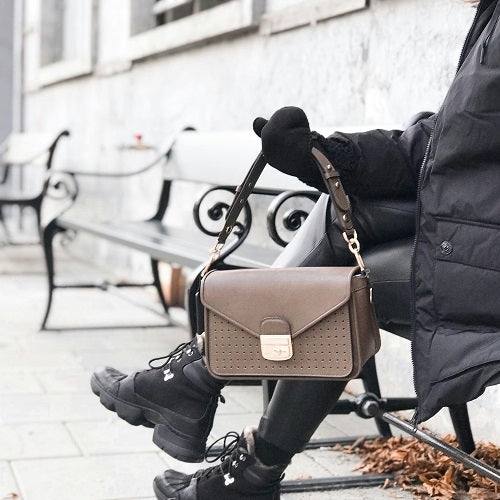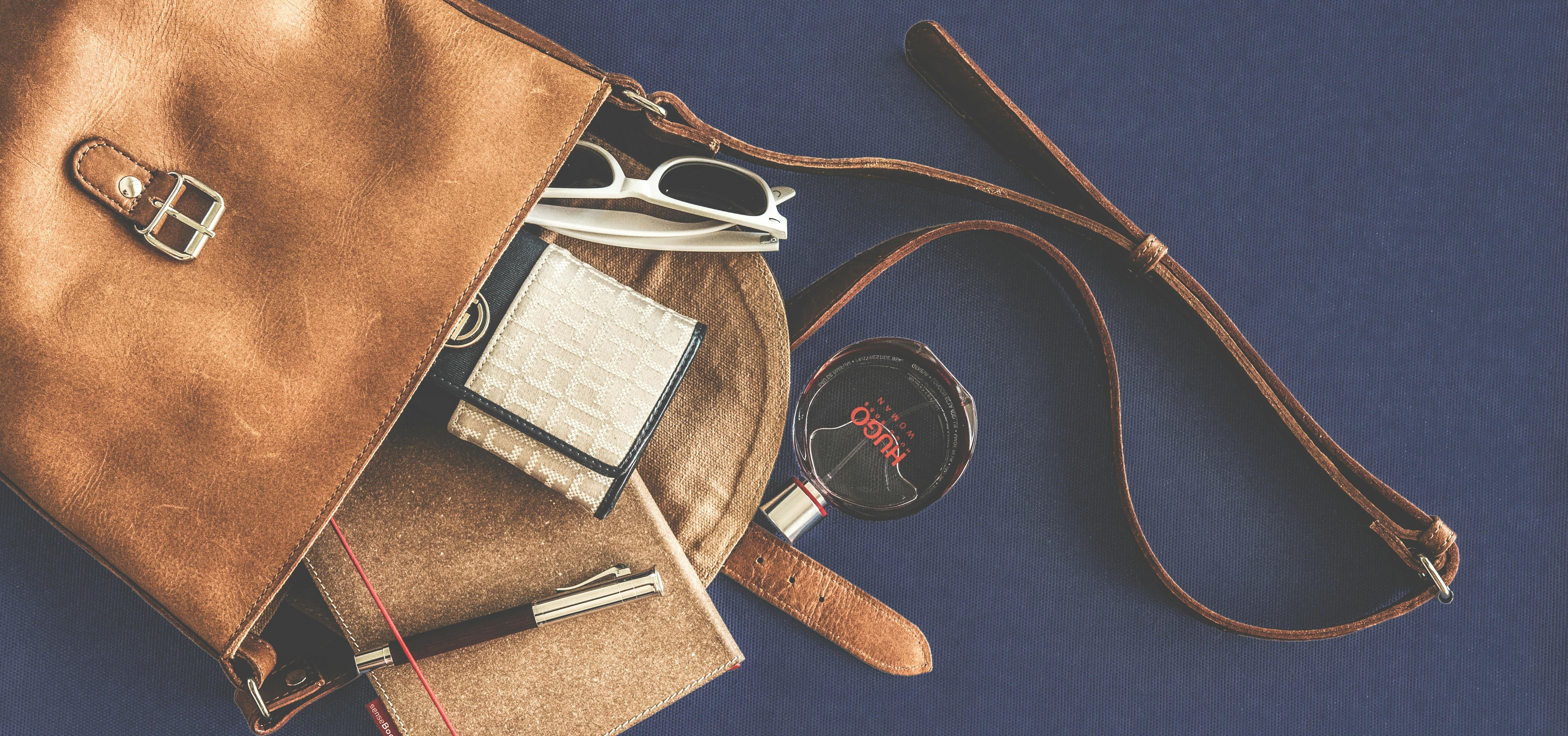
Satchel, sling, clutch, shoulder, or hobo bag – the essential criterion for a handbag is its power to convey identity, an identity that dates back centuries, if not millennia.
Handbags are far from a modern invention. These ubiquitous accessories have witnessed humanity’s evolution and boast a rich history. In one form or another, handbags have been around for centuries, embodying our basic need for ownership and the desire to display our possessions. Consequently, they have been an integral part of wardrobes across different cultures for both men and women.
A Reflection of the Era
Handbag actually started as a man's accesory.
From Ancient Egyptian hieroglyphics depicting men with pouches around their waists to the late 17th century, it was men who carried bags. Even the term 'handbag,' first popularized in 1900, originally referred to a man's hand luggage.
For thousands of years, bags were purely practical objects. Our earliest ancestors used bags made from animal skins and plant fibers to carry hunting and gathering tools.
It wasn't until the Middle Ages that bags became fashion accessories. They evolved into forms of self-expression, showcasing the craftsmanship of their makers. People began carrying drawstring pouches adorned with ornate embroidery and jewelry. Men of high social status displayed their wealth with luxurious purses tied to their waists.
During the Renaissance, the first courier service began in Italy, and messengers used sturdy bags made from tooled leather to carry papers and money between banks. Around 1497, Leonardo da Vinci ventured into fashion design and sketched an elaborate leather bag. In 2012, as a tribute to the city of Florence, the fashion house Gherardini brought Leonardo's design to life and named it "La Pretiosa" which means "precious".

Despite its beauty and elegance, Leonardo's bag was not designed for women. At that time, men typically carried money in pouches made of cloth or hide, attached to their waist belts. Women, on the other hand, used drawstring purses as fashion accessories or to hold small items. Grooms often gifted brides with embroidered bags depicting love stories and poems as wedding gifts. These bags hung from drawstrings on women's girdles and held items such as pomade or rosaries. These were the predecessors of the chatelaine, a decorative belt hook or clasp worn at the waist, with small sewing tools, watches, and other objects suspended from chains.
Evolution
During the 16th and 17th centuries, fashion underwent dramatic changes, and women began wearing large, voluminous dresses. This made it impractical to wear girdle pouches on the outside of their clothing, as they would get tangled in the fabric. Instead, women wore girdle pouches under their skirts, leading to the invention of pockets.
Men's fashion also evolved during this period, affecting the pouches they carried. With the invention of pockets around 1670, men no longer needed to carry pouches strapped to their girdles. They began using smaller pouches for their money, which eventually evolved into wallets.
Not everyone carried small pouches, however. Lower classes, peasants, and travelers used messenger bags and larger satchel-like bags worn across the body, known as sacks. These utilitarian bags were better suited for carrying larger items.
In the 18th century, fashion changed once again. The discovery of the ancient city of Pompeii sparked a fascination with sleek and slender designs. As a result, women started wearing slimmer, narrower dresses that couldn't accommodate girdle pouches. This led to the reinvention of the purse. During this time, women began carrying slender purses with wrist straps, known as reticules or indispensables.
The Dawn of Modern-Day Handbag
The bags not only conveyed the social status and identity of the wearer but also indicated their freedom to move within society. In the earliest days, bags were exclusively carried by wealthy men, who were more likely to venture outside the home. Women, largely confined to the home, had no need for such accessories.
However, by the end of the 19th century, the advent of public train travel enabled women to socialize and travel more independently, both across land and sea. The purse emerged as a powerful symbol of female emancipation.
In addition to the large pieces of luggage carried by porters, women required smaller bags to hold tickets, papers, and money. Luggage designers like Louis Vuitton began creating utilitarian bags that resembled miniature suitcases, complete with sturdy handles, multiple compartments, and snap closures. The portmanteau bag, ideal for travel, also gained popularity among doctors. Thus, the modern handbag was born.
Today's Handbags
Handbags have evolved significantly in modern times, crafted from a vast array of materials limited only by imagination. Both men and women now sport these accessories slung over their shoulders, nestled under their arms, or gripped firmly in their hands, serving as indispensable repositories for the myriad essentials of contemporary life.

The assortment is diverse, ranging from practical satchels and utilitarian backpacks to elegant clutches and coveted 'It bags' that captivate fashion enthusiasts worldwide. As we ponder the trajectory of handbag design, one can't help but wonder: what innovations lie ahead? What novel materials, styles, and functionalities will shape the future of this iconic accessory?



